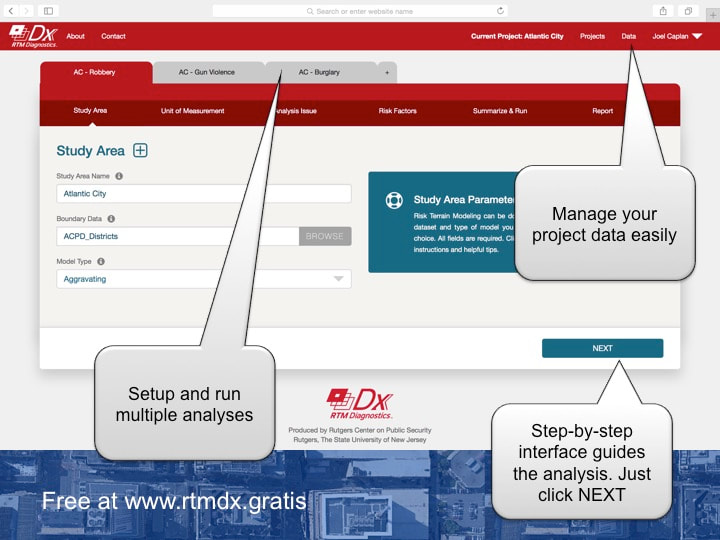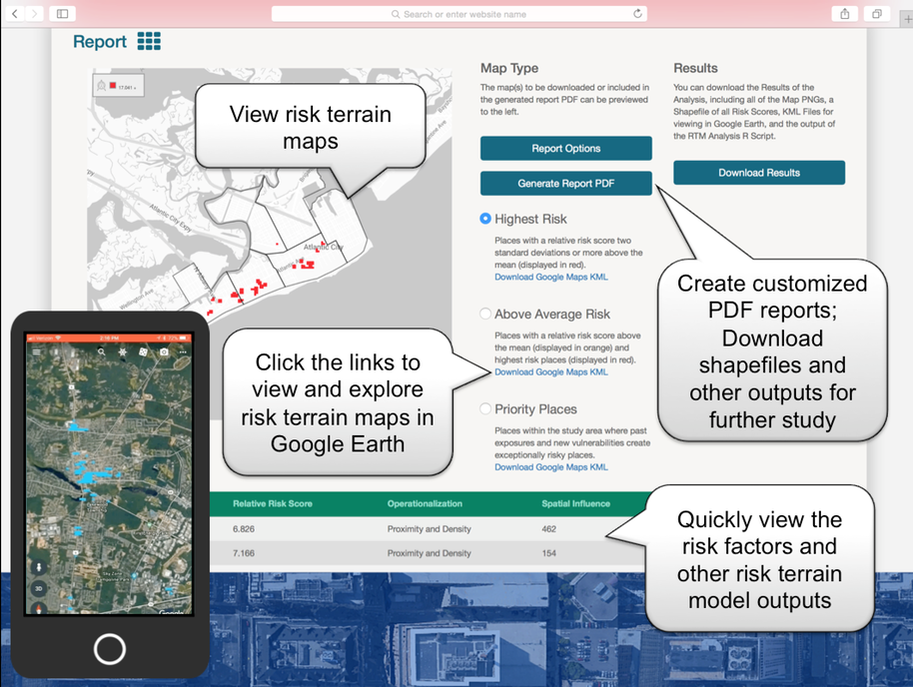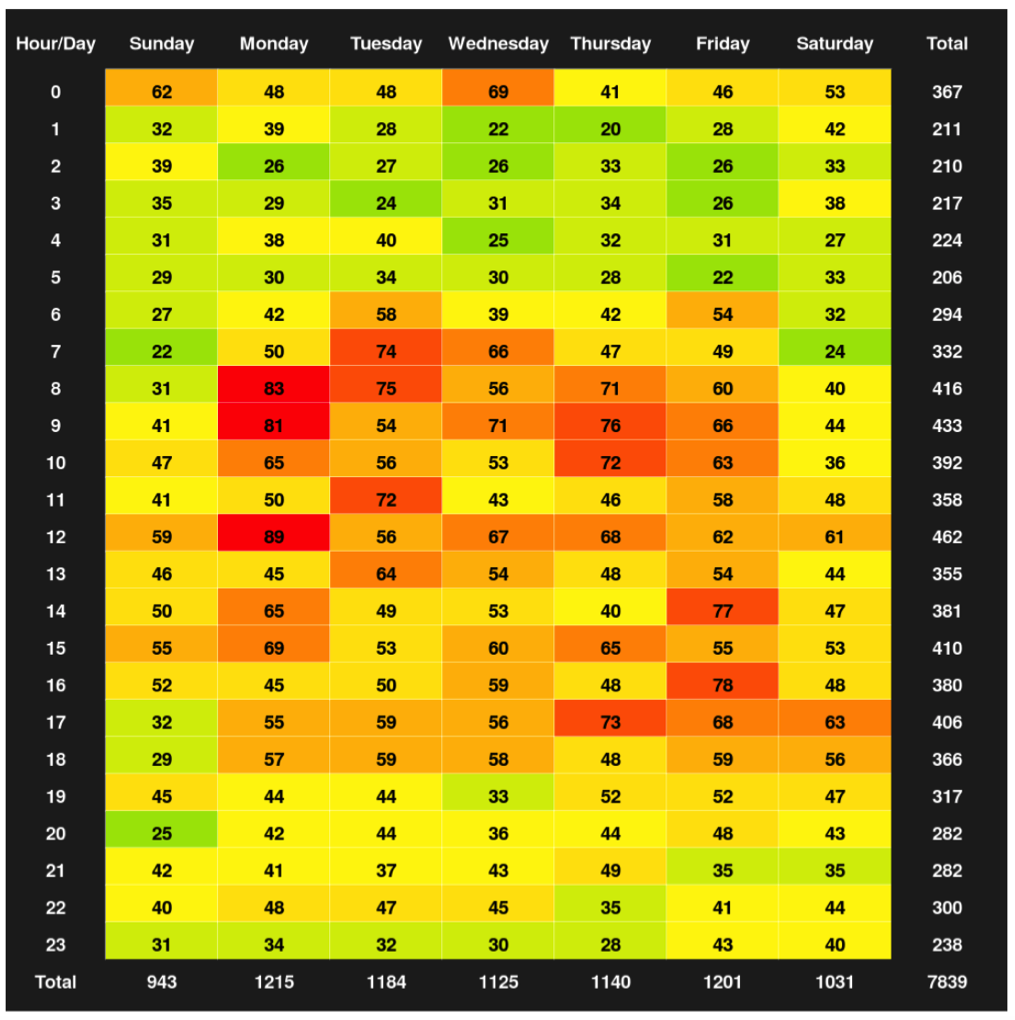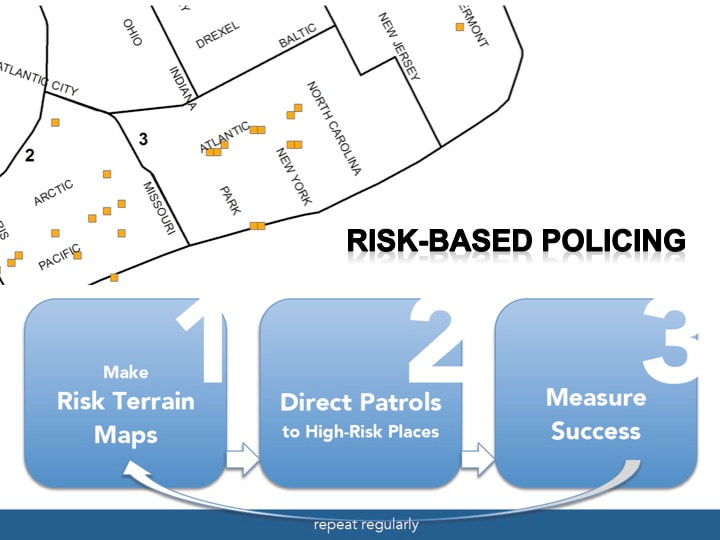Risk-based policing with RTM follows 3 basic steps: Assess spatial risks, deploy resources to high risk places, and collect data to check for success, then repeat. Use this worksheet as a guide. From the book Risk-Based Policing: Evidence-Based Crime Prevention with Big Data and Spatial Analytics (2018 University of California Press)
|
|
|
The official website of Risk Terrain Modeling (RTM) research and resources, based out of Rutgers, The State University of New Jersey.
|






 RSS Feed
RSS Feed